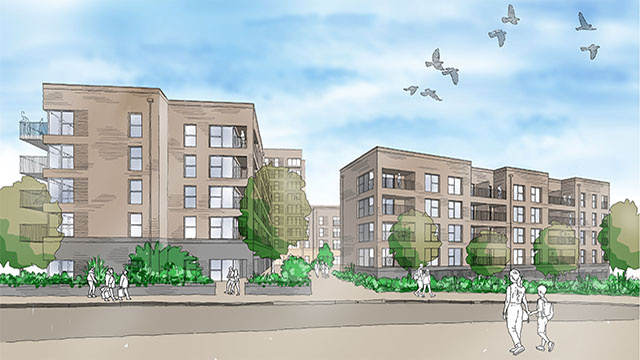A London judge ruled this week in a topical boundary dispute – one involving a drainage ditch that takes floodwater to the sea.
The case centres on a field in the Norfolk village of Thornham, next to the sea and the village’s flood defences.
The field’s owner, Jocelyn Patrick, says “King Neptune” is his neighbour, according to a judgement handed down this week.
According to the ruling, Patrick bought the field in 1984. However, for various reasons, he only recently decided to register the plans at the Land Registry.
This has caused a dispute because, while everybody agrees that he owns the field, his neighbours and the parish council claim that he doesn’t own the drainage ditch that serves as a boundary.
This, according to the judge who heard the case, “is an important matter for local landowners” as it affects drainage in the areas.
In her ruling, Judge Elizabeth Cooke said that a legal remedy based on the information available is unlikely to help.
This is because it “will still result only in a general boundary and is therefore unlikely to resolve the parties’ dispute. I fail to see how a decision on appeal can determine ownership of the eastern ditch.”
In fact, the answer might not come from a court at all, she said.
“If the parties want to know whether the appellant owns the eastern ditch, they will need to take a different course. One way forward would be to compromise the appeal, allow the registration to proceed, and for one or other party to apply for the determination of the boundary under section 60 of the [Land Registration Act 2002] on the basis of accurate plans.
“The preparation of plans will be expensive (as has been the parties’ failure to have accurate plans prepared to date) and it will be for the parties to decide whether it is worth taking that step.”
And it may well not be, because the judge said that, when she visited the site, “I was very struck by the dominance of water in the landscape and the instability of features such as hedges and ditches.
“I wonder whether the field will still be there in a few decades’ time.”
This is a good example of a common dispute becoming very complicated very quickly, said Lara Nyman, partner at Seddons.
“Boundary disputes are all too common and, as highlighted by this complex case, given that Land Registry title plans only show general boundaries,” she said.
“Landowners frequently look for more certainty and, as a result, can find themselves involved in a time-consuming and expensive dispute. Given the increased flooding risk that we are now seeing, ownership – and therefore responsibility for maintenance and clearance – of the ditches is of increasing importance.”
Tristan Ward, a partner at BDB Pitmans, agreed that, while expensive, proper plans are to be recommended to stop a common dispute descending into complexity.
“Situations where an accurate plan, or an express description of a boundary, does not exist, are often fertile grounds for such disputes to arise” he said.
“Although professional plans can, as Judge Cooke explains, be expensive, professional plans are certainly a wise investment in property transactions and applications in order to mitigate the risk of a boundary dispute in the future – a far greater expense,” he added.
In the Matter of an Appeal Against the Decision of the First-Tier Tribunal (Land Registration Chamber) Under S.11 of the Tribunals, Courts and Enforcement Act 2007
Between: Mr Jocelyn Brownlow Patrick and (1) Thornham Parish Council (2) Stephen William Bett (3) John Stephen Gethin
Re: All That Land Known as Field 222, North of the Green, Thornham, Hunstanton, Norfolk
Upper Tribunal (Lands Chamber) (Judge Elizabeth Cooke)
19 February 2020







